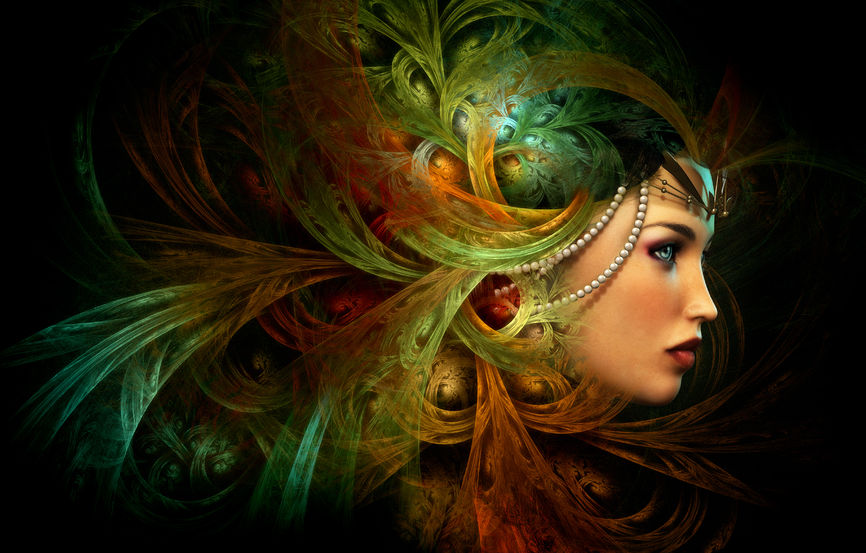
Dear Beauty,
Easter, the season of new life, invites us to celebrate the fact that we are precious works of art, created by The Master. Not only have we been created with care, we’ve been given freedom of choice to design a life for ourselves—the artwork becomes the artist.
In thinking about creating our lives, we can use the Elements of Art from the visual art world as a guide. You may remember studying these building blocks of design: Line, Shape, Form, Space, Texture, Color, and Value. So If we are artists of our own life, how do these elements, or aspects, of art relate to a creative life?
Let’s take a look:
LINE has several meanings. In math class we learned that a line is a long thin mark that is straight with no curves and goes on into infinity. This describes our immortal souls quite well.
In art, a line is longer than it is wide and can be straight or curved. Our journey through life mirrors this art definition. Life takes many twists and turns, it seems to go on forever, but our lives are really line segments (having a beginning and an end) and sometimes we move horizontally and other times, our paths zig and zag.
Holly, a friend from Iowa, once told me, “The beauty and curse of being our age is that we can spot a train-wreck in someone else’s life—before it happens.†She probably means that some paths lead to predictable outcomes (consequences) and even though we hope to spare our children, friends and family pain, their course may provide the necessary lessons they need to learn and we do more damage giving unsolicited advice. After all, it’s their life, their art.
SHAPE is a closed line. The Ancient Celtic people loved circles; square shapes seem strong, while triangles lead our eyes upward. Many times, our bodies are described as shapes: pear, oval, flat, angular. Our bodies are like physical homes that make it possible to be an individual living on Earth.
Sometimes I envy tall shapes, and yet my height, without heels, is pretty well set. Discussing shape reminds us that the physical ‘shape’ we’re in is part hereditary, part environment and a big part a reflection of the choices we’ve been making. The good news is, if we don’t like our shape, we can be comforted in the fact that we are a work in progress—changes are possible! Peace comes in knowing which things we can change and which things we need to accept as is.
FORM is a three-demential shape. That certainly fits us! Not only do we have length and width, but depth as well. Through aging we become more interesting, more multi-dimensional. We have the opportunity to grow through reflecting on the role models we imitate, on heartaches we survived and a thousand life lessons.
SPACE is the area between and around objects. We need space in myriad ways. Poetry is a blend of words and silence. We need a balance of rest and activity, being alone and being with people, nature and civilization, being quiet and speaking out. It’s even healthy for a couple to spend time apart, creating space for their individuality.
Reflection is the silence we need to understand the noise of our lives. I’ll never forget the wonderful formula given to us by Carl, head of our Master of Arts in Servant Leadership program: Experience + Experience + Reflection = Wisdom. Carl reminds us that if we don’t take time to reflect upon our experiences, we become old with no wisdom.
TEXTURE is the part of the painting that can be seen and felt. It might be rough or smooth, hard or soft. I talked with two artists who said that creating texture is a bit tricky. Some artists avoid this element because it can cause problems. As humans, I imagine texture as the grit we gain from overcoming obstacles. The ‘bad’ habits or events of our lives can destroy us—as a fire—or we can be refined by them.
The quirky parts of us may be considered flaws by some, but on the other hand, they make us real and lovable humans, especially when we’re honest enough to acknowledge them. Accepting our contradictions and changing what we don’t like is the essence of an artistic life. Redemption stories are the best, and by the way, isn’t Holy Week all about redemption?
COLOR expresses emotions, moods, and brings life to the visual artist’s story. I remember when the Iowa Hawkeyes painted their opponent’s locker room pink in order ‘soften’ their opponents’ resolve. Good or not so good health can be seen by the color of our skin. We color our hair, wear colored clothing to bring out our eyes; even our voices have color, the focus of last week’s blog (see March 20,2016). The art in life is to love and accept the colors we can not change and change the ones we can.
VALUE refers to the lightness or darkness of a color. We use the word value when it comes to black and white photographs, as they are actually many shades of gray (I’m not sure if there are 50 or not). When I met LaRae years ago, her smile was luminous, as if she was showing off her soul. Immediately, I wanted to be her friend. The best part of meeting someone face to face is to experience the value that surrounds them. We get to look into their eyes to see hidden beauty first hand.
I like the old saying, “We’re all alone together.†We are ultimately responsible for the elements we blend into our lives, yet we have the opportunity and the responsibility to uplift, encourage and cheer each other forward. We all win when we perceive each person’s journey as a rare and priceless work of art.
May your self-trust build confidence,
Jan